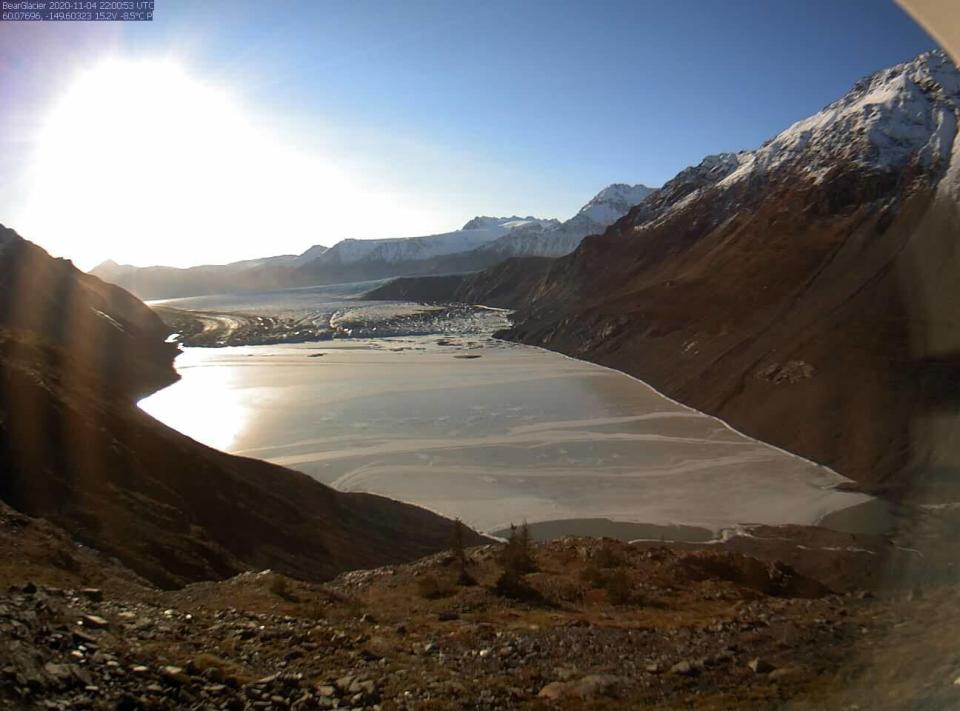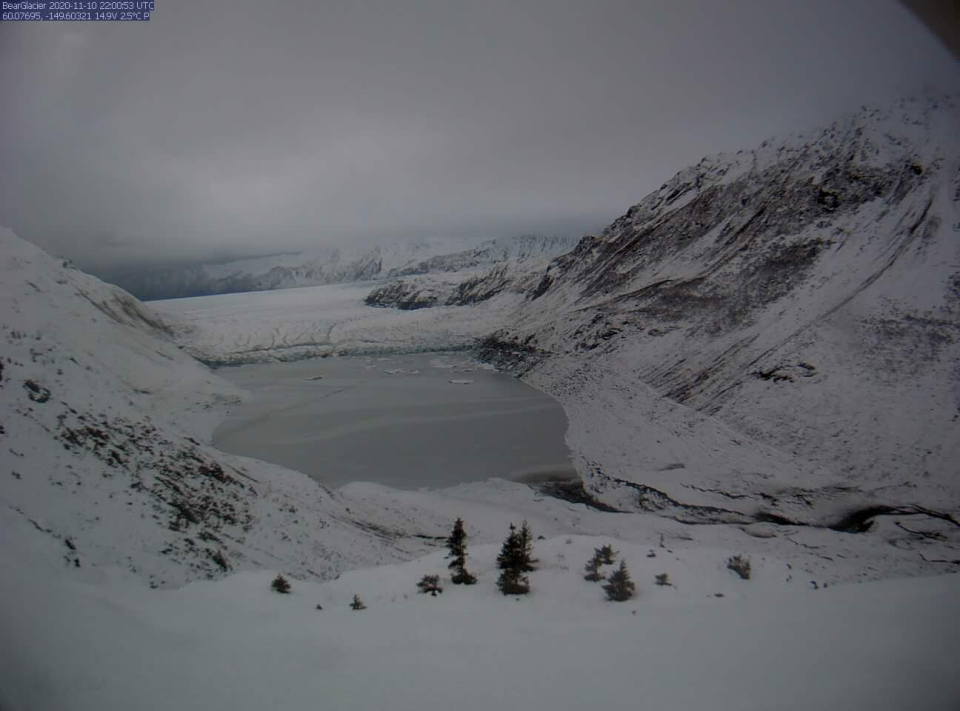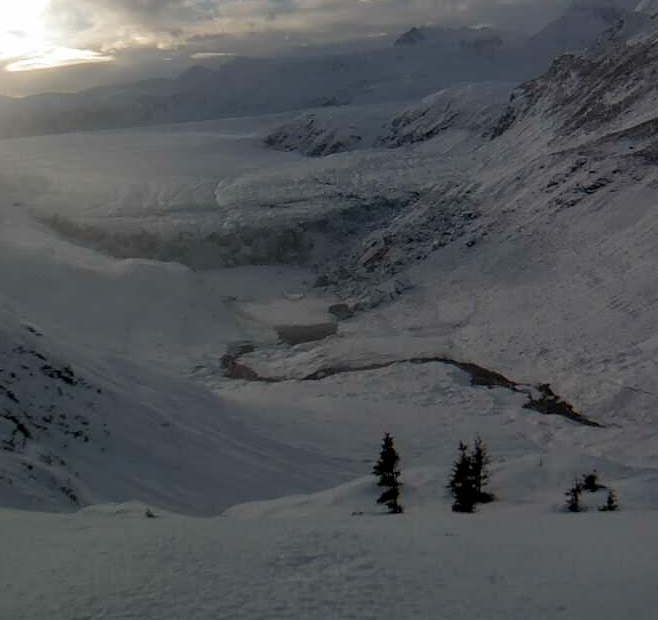Incredible photos show how lake vanished in matter of days
In just a matter of days, a lake in Alaska completely vanished, and authorities are warning of the potentially “hazardous” consequences this may have.
Alaska’s Kenai Fjords National Park is where the mountains, ice and oceans meet and where a bizarre phenomenon has been observed over the past few years.
On Facebook, the Kenai Fjords National Park service shared three photos of an “ice-dammed lake” above Bear Glacier taken on three different days, spanning from November 4 until November 13.
During those few days, the lake completely vanished.

The pictures were taken on a remote camera placed in the area. Due to the season, there have been no eyewitness reports from the surrounding area.
“These events have occurred in winter in the past, but this was the first time we have been able to observe the lake draining in winter with our time-lapse camera,” Kenai Fjords National Park said on Facebook.
In a statement released by the National Parks Service, the lake in the picture is around 10km above the terminus of Bear Glacier and the water from the lake started draining on either November 4 or 5.
Now, due to the drainage, it is expected the lagoon at the end point of the glacier will flood.
“Draining of the ice dammed lake can create hazardous boating conditions that might include: an increase in iceberg calving at the terminus of Bear Glacier, standing waves and strong currents, or the redistribution of sediment and debris in channels like the one that exists at the outlet of the lagoon,” the media release said.

In their post, Kenai Fjords National Park indicated what could be expected in the coming days.
“Past glacial lake outburst floods have produced ice chunks as large as 6 x 6 ft above the water surface as well as small, less visible pieces which could cause significant damage and/or injury to boat traffic.
“Visitors are advised to always exercise caution in this very dynamic area.”
People who have visited Bear Glacier over the years have reported elevated water levels in the lagoon, which can be attributed to glacial lake outburst floods.
Lakes which are formed from water trapped below, behind or inside a glacier are known as glacier-dammed lakes, the National Parks Service says, an occurrence which is common throughout south-central Alaska and at Bear Glacier.

“These glacier-dammed lakes can release dangerous floods known as glacial lake outburst floods (GLOFs) or Jökulhlaups,” the National Parks Service says on its website.
“Unfortunately, the same waters which draw in recreationalists are also the final destination for much of the flood water displaced by GLOFs at the glacier.”
Glacier-dammed lakes may appear to be stable for years, but GLOFs have the potential to decimate nearby towns or infrastructure.
Fortunately, there have been no reports of damage or human injury due to the event at Bear Glacier.
Do you have a story tip? Email: newsroomau@yahoonews.com.
You can also follow us on Facebook, Instagram and Twitter and download the Yahoo News app from the App Store or Google Play.




